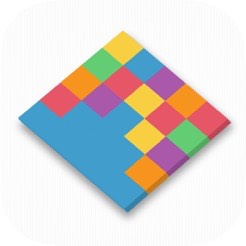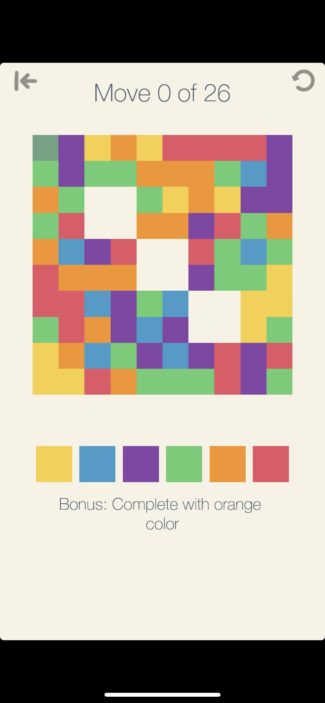Bastion
LQ: 9.15
Recommended Age: 10+
Skills Used: Planning, Working Memory, Mathematics, Reading

Colors United takes a block of various colored pixels and asks the player to turn the entire block into one color. To do this, the player changes colors one at a time, “capturing” the surrounding colors by matching them. The tutorial level does a good job of showing the player what to do. Each level has a goal (such as finish with the color yellow) and the player must also finish within a certain number of moves.
There are also three different modes. Stage mode is what was described above. Basic game play with level goals and, every so often some bonus levels. Free mode is the game with no goals or guidelines to focus on. And, finally, there is a battle mode where the player goes against a friend or the computer and tries to capture more of the pixels than the other player.
Colors United contains ads and offers in-app purchases. The ESRB rated it E for Everyone and LW4K stands by this rating.
Colors United helps kids practice and improve the following skills:

Getting started and then maintaining attention and effort to tasks.
Playing this game may seem simple enough: change the blocks until they are all one color. But the player has to do it in as few a moves as possible. This means they need to ignore internal and external distractions and keep their attention on the blocks of color. If they don’t, they will end up picking a color that claims few or no new blocks. The size of the puzzles also varies from level to level. This means that the player will be using short-term focus skills in some puzzles and long-term focus in others. Either way, if the player doesn’t maintain focus, they will fail to achieve the goals of each level and be unable to unlock new or bonus levels.
Developing a systematic approach for setting and achieving goals.
Although it may not be as hard as algebra, these puzzles still have problems to solve—and that requires the player to use their planning skills. First is the short-term planning. The player needs to decide which color to switch to next. But there is also longer-term planning: of the available colors to claim, which makes the most sense for the over all level. Because the player also has to be thinking about the total number of moves available, as well as the bonus goal. If the player doesn’t keep these things in mind and make a plan, they will fail to reach one or both of the goals and will have to replay the level.
All membership plans come with full access to our entire suite of tools learning guides, and resources. Here are a few of the ones we think you’ll like the most: